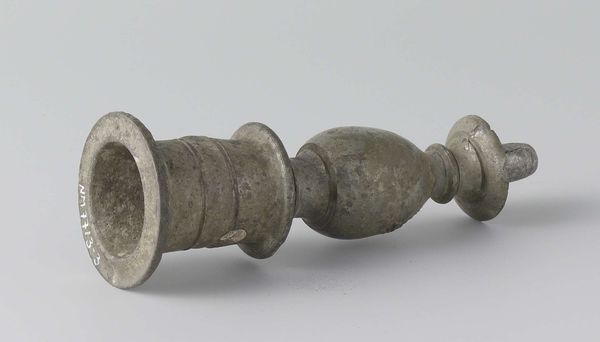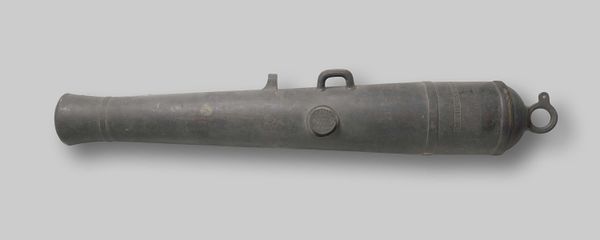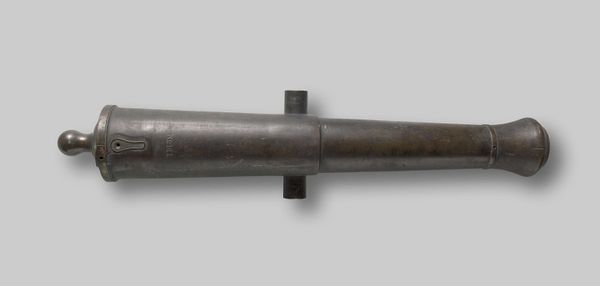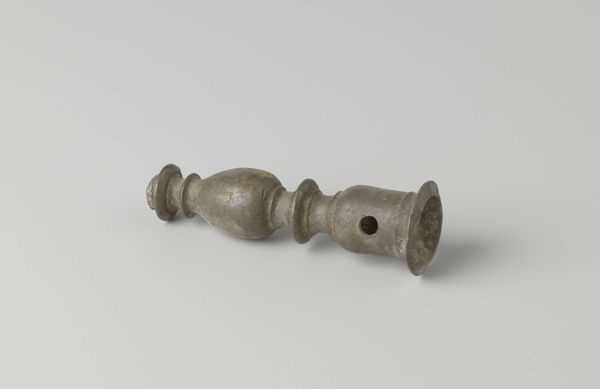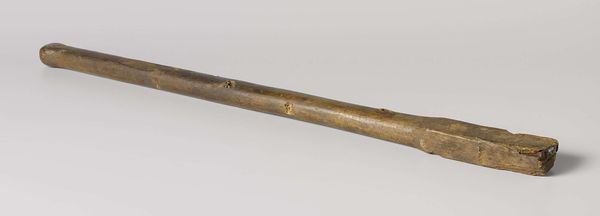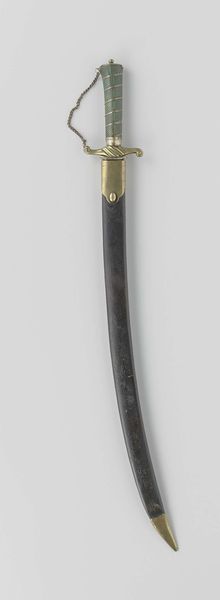
metal, bronze, sculpture
#
baroque
#
metal
#
sculpture
#
bronze
#
sculpture
#
history-painting
Dimensions: total length 136 cm, total diameter 33.5 cm, length 14.5 cm, length 121.5 cm, calibre 6.7 cm, weight 210 kg, muzzle-vent length 112 cm, diameter 7.6 cm, base ring diameter 22.3 cm, trunnion diameter 6.7 cm, barrel diameter 13.3 cm, barrel diameter 20.5 cm
Copyright: Rijks Museum: Open Domain
Editor: This striking object is “Captured Ordnance,” a bronze cannon created by Laurens Oxsen in 1667. Its austere metallic form and the imposing design certainly evokes a sense of martial power. What stories and symbols are embedded within its creation, Curator? Curator: The cannon, beyond its function, is rich in symbolism. Consider the choice of bronze - a material associated with strength, permanence, and even immortality in many cultures. The presence of ornate handles may speak to control and perhaps even artistry amidst the context of warfare, how do those contrasting meanings come across to you? Editor: That's a fascinating contrast! I see your point. They soften what would otherwise be pure brute force, like a claiming of mastery over conflict itself. Curator: Precisely! It reveals the cultural memory of naval prowess of the Dutch in the 17th century, connecting historical events with material objects and societal pride. These embellishments elevated the cannon beyond mere weaponry, giving it meaning in this society and its time. Does knowing this influence your initial impression? Editor: It does! It makes me think of state power and how much visual messaging would be part of their wars. It seems the intention goes far beyond military application; it's about projecting an image. Curator: Exactly. Its display served to assert dominance, not just on the battlefield but also in the realms of trade, art, and culture. We can observe history's evolution through these potent artifacts. What meaning might someone take from such an object now, compared to its origin? Editor: Thinking about today, I wonder if a cannon might still project a symbol of strength, or something more obsolete… perhaps a cautionary reminder of our capacity for destruction. Curator: Indeed. As time passes, the emotional and cultural significance evolves with societal values and perspectives.
Comments
rijksmuseum about 2 years ago
⋮
After Java was brought entirely under Dutch rule during the Java War (1825–1830), the Dutch sought to gain control of the other Indonesian islands as well. Various military expeditions were mounted to force the rulers of these islands to recognize Dutch authority. These cannons were seized during those battles. One is an old Dutch East India Company cannon of 1667.
Join the conversation
Join millions of artists and users on Artera today and experience the ultimate creative platform.


